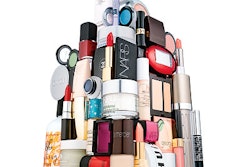Based on a paper by Sagar S. Shejwalkar and Prasad Balan Iyer of the Centre for Green Technology/Department of General Engineering at the Institute of Chemical Technology, which is based in Mumbai, India, the presentation was delivered by Iyer. Every business must calculate its own requirements when it comes to sustainability, and how each company prioritizes the principles below will be different. But considering how many people are still unsure about how to structure their approach to sustainable packaging, these twelve principles are useful guide posts.
• Reduce/eliminate hazardous substances in the packaging materials
In paper, for example, this would include sizing or whitening agents. In plastics, phthalate-based plasticizers and heavy metals in inks or adhesives should be avoided. And new materials having less environmental impact should be examined.
• Use raw material/feedstock of greener origin
This could be materials that are bio-based or from renewable resources. P&G’s Pantene bottle made partly of sugar cane is one example. “Try some portion of bio-based materials if the whole container can’t be bio-based right away,” advised Iyer.
• Select packaging material based on its disposability
For example, use the same or similar materials for different components of a package, from cap, to label, to bottle. “It is industry’s or the retailer’s responsibility to ensure that the packaging material selected can be disposed of properly at the end of its use,” said Iyer.
• Create a green design
In other words, reduce the number of components, and give careful thought to inks, labels, adhesives, etc.
• Modify/substitute existing packaging material or process
Keep pace with new technology that can assist with sustainability.
• Make packaging machines and systems energy efficient
Here, the application of mechatronic principles, servo motors, regenerative power bus systems, and ergonomic design should be considered.
• Reduce waste generated during processing, conversion, and packaging operations
• Apply green logistics
Cut down on CO 2 emissions. Look for shorter routes and capitalize on reverse logistics if possible.
• Segregate and dispose of waste
Use effective waste segregation. Consider washing and grinding if need be. And don’t forget “waste to wealth,” a good example of which would be arranging to have plastic waste molded into patio furniture, or even using waste as the foundation for building roads.
• Optimize packaging economics
• Comply with regulations and create awareness among consumers
• Use sustainable packaging metrics and tools to evaluate sustainable packaging.
The 18th World Packaging Conference is being hosted by the Packaging Program at California Polytechnic State University in San Luis Obispo and is produced in collaboration with the International Association of Packaging Research Institutes (AIPRI). Packaging World is a Gold Sponsor of the event.

























